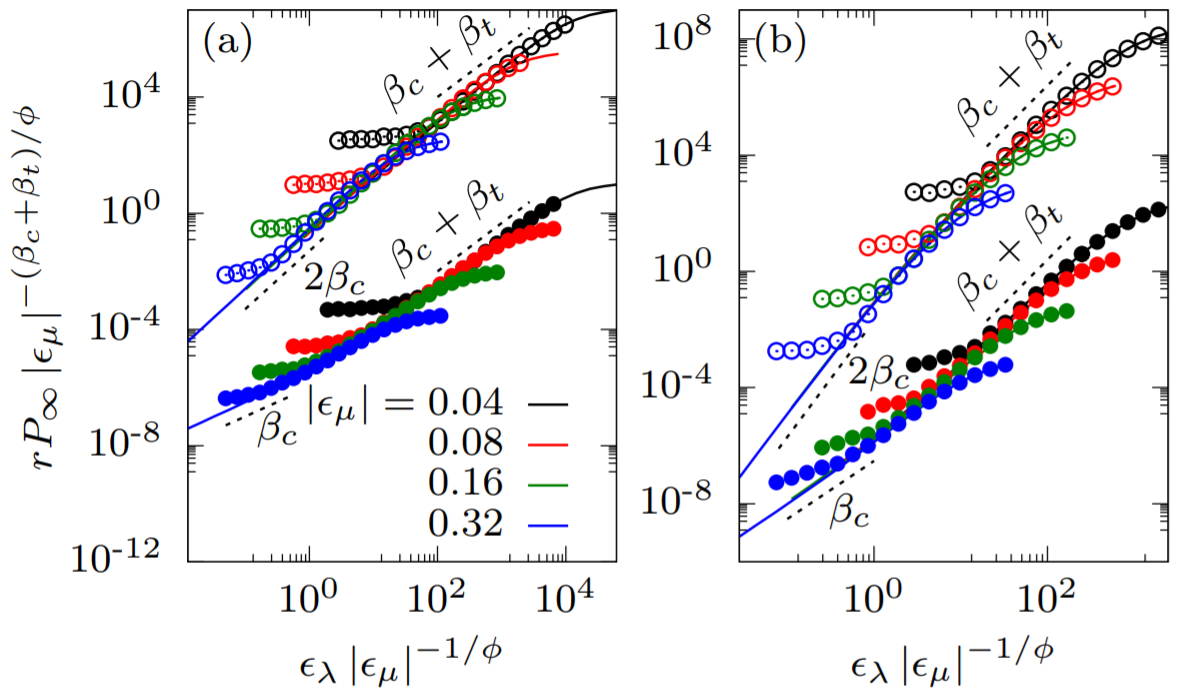

0%

I worked on the following two topics by means of statistical physics inspired approaces and large-scale data.
Through analysis of European paintings available online, I have been quantitatively studying evolution of painting styles and color palette as well as relationships between individual artists' style and their career changes.
Through analysis of patent records provided by the United States Patent and Trademark Office, European Patent Office, and World Intellectual Property Organization, I have been investigating how technologies change over time.
2009 ~ 2020

Byunghwee Lee, Min Kyung Seo, Daniel Kim, In-seob Shin, Maximilian Schich, Hawoong Jeong, and Seung Kee Han.
Proceedings of the National Academy of Sciences of the United States of America, vol. 117 no. 43 26580-26590 (2020).
[Paper Link]
[Highlighted by Forbes]

Dong-Kyum Kim, Byunghwee Lee, Daniel Kim, Hawoong Jeong.
Journal of the Korean Physical Society 76,pages368–377 (2019).
[Paper Link]

Yongjoo Baek, Kihong Chung, Meesoon Ha, Hawoong Jeong, Daniel Kim.
Physical Review E 99, 020301(R) (2019).
[Paper Link]
[PDF at arXiv.org]

François Lafond, Daniel Kim.
Journal of Evolutionary Economics (2019).
[Link],
[PDF],
[PDF at SSRN],
[PDF at arXiv.org]
[Data]
Interactive visualization of Figure 8.
Byunghwee Lee, Daniel Kim, Hawoong Jeong, Seunghye Sun, Juyong Park.
PLoS ONE 13(9): e0204430 (2018).
[PDF]
[PDF at arXiv.org]

Byunghwee Lee, Daniel Kim, Dongwoo Kim, Hawoong Jeong. New Physics: Sae Mulli 66, 4 (2016). [PDF]
This article was selected as a highlighted paper and introduced on the cover in April 2016.

Daniel Kim, Daniel Burkhardt Cerigo, Hawoong Jeong, Hyejin Youn. EPJ Data Science 5:8 (2016). [PDF]
This paper was introduced in SpringerOpen Blog and Santa Fe Institute news.

Daniel Kim, Seung-Woo Son, Hawoong Jeong.
Scientific Reports 4, 7370 (2014).
[Link] [Paper] [SI] [Movie]
This paper was posted on Nature.com main page, being selected as a Nature Research Highlight (also held the first rank of the most viewed research highlight on Nature.com from 14 December 2014 to 14 January 2015).
Subsequently, it was introduced and covered in PNAS, Daily Mail Online, Business Insider Australia, 5 Korean TV news stations (Yeonhap news TV, YTN, KBS, MBC, and TJB) and 18 Korean major newspapers. [More info]

Kihong Chung, Yongjoo Baek, Daniel Kim, Meesoon Ha, Hawoong Jeong. Phys. Rev. E 89, 052811 (2014). [PDF]

Jungjoo Seo, Jinil Kim, Eunsang Kim, Daniel Kim, Hawoong Jeong, Sung-Ryul Kim, Kunsoo Park. Journal of KIISE : Computing Practices and Letters 19, 7 (2013). [PDF] - Korean

Yongjoo Baek, Daniel Kim, Meesoon Ha, Hawoong Jeong. Phys. Rev. Lett. 109, 118701 (2012). [PDF]

Daniel Kim, Seung-Woo Son, Hawoong Jeong. J. Korean Phys. Soc. 60, 585 (2012). [PDF]

Sue Moon, Jinyoung You, Haewoon Kwak, Daniel Kim and Hawoong Jeong. COMS-NETS 2010 Bangalore, India, January 2010 (2010). [PDF]

Korean Translation. [Online Book Link]
Please feel free to try each one.

Period (2016-07 ~ Current)
Click and try this.
GitHub repository.

Period (2018-01 ~ 2019-08)
Click and try this.

It is based on the recent administrative district map (city level - Feb. 2016).

This interactive Sankey diagram quantitatively shows the change of the U.S. patents' primary technology classification code over time.

In this visualization, you can interactively change the parameters of Vicsek's model.

This movie represents the evolution of events in the Annals of the Joseon Dynasty spanning 473 years.

It is like Google N-gram but not exactly same. This visualization is based on the large-scale Korean historical database such as the Annals of the Joseon Dynasty spanning 472 years (1392-1863), the Daily Records of the Royal Secretariat spanning 272 years (1623-1894), and the Border Defense Council of Joseon spanning 276 year (1617-1892).

This country-level patent citation network was built with all of the Google patent HTML files up to December 2014.

This technology category network was buit with cumulative co-occurrence values between technology categories in the United States patent records.

This movie shows the evolution of each node's strength in the co-occurrence network constructed by the U.S. patent records spanning 225 years, where a node indicates a 9-digit U.S. technology classification code in the U.S. patent records, the strength of a node is defined by the sum of neighboring link weights of the node, the radius and the opacity of a circle in this movie indicates the strength of a technology code, and the color of a circle represents its category.

This interactive visualization is based on the Annals of the Joseon Dynasty spanning 472 years (1392-1863).
